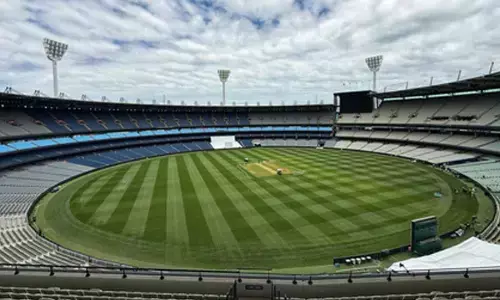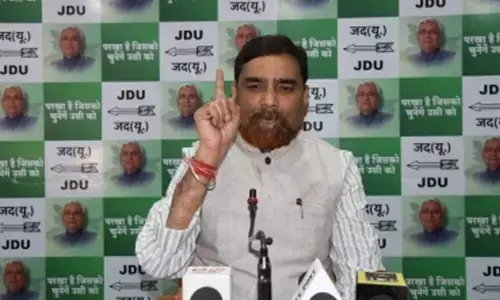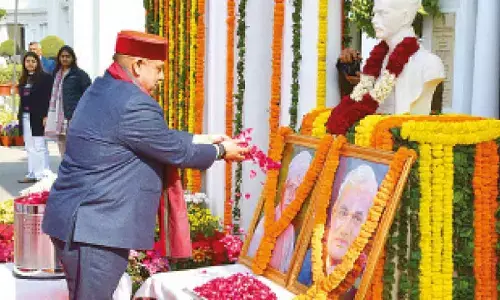Key takeaways from the Second Economic Survey-2

The second volume of Economic Survey for the financial year 2016-17, proved to be a mixed bag. The survey says all is not well on the fiscal side, tabled in Parliament on 14th August, 2017.The Survey emphasis on a \'rekindled optimism on structural reforms in Indian economy\',
The second volume of Economic Survey for the financial year 2016-17, proved to be a mixed bag. The survey says all is not well on the fiscal side, tabled in Parliament on 14th August, 2017.The Survey emphasis on a 'rekindled optimism on structural reforms in Indian economy',
with the launch of the Goods and Services Tax (GST), which has been in the making for nearly a decade and half. Meanwhile, the Survey also points out that Asia's third-largest economy might not attain grow at its full potential, because of the disruptions caused by these radical reforms
The Economic Survey highlights many - from unprecedented decline in inflation figures to contracting service and manufacturing sectors, Reserve Bank of India being the only central bank to slash interest rates across Asia, as well as difficulties in job creation. Here are the key takeaways from the latest Economic Survey:
Brakes on GDP
The Economic Survey has cautioned that achieving the upper end of its economic growth estimates of 6.75 percent -7.5 percent in the current fiscal will be difficult. The balance of risk to growth has shifted to the downside. The balance of probability has correspondingly shifted away from the upper end of the growth projected in the Volume-I of Economic Survey, presented earlier this year in February.
As Indian economy still reeling under disruptive effects of demonetization, and trying to cope up with the ambiguous provisions of Goods and Services Tax, these speculations seem to stand true.
Fiscal Deficit to decline
The survey stated that owing to the gradual fiscal consolidation path chalked out in Union Budget for 2017-18, the fiscal deficit is expected to meet the target of 3.2 per cent of GDP in the current fiscal. After reaching this milestone, the fiscal deficit target of 3 per cent of GDP under the FRBM framework is likely to be achieved in 2018-19.
GST
The Survey mentioned about Goods and Services Tax (GST) as the most significant economic reform that put into practice during the financial year 2016-17. From July 1, 2017, this new tax regime unified an assortment of Central and State level indirect taxes, making unification of Indian markets possible.
It also states that demonetization affected two to three quarters- two quarters last year and one quarter this year- GST will effect about two quarters in the current fiscal. This along with rupee appreciation and a continued deficiency of private investment and export demand has accentuated the impact of GDP growth.
RBI under pressure
Disinflationary pressures allowed the RBI to cut its main policy rate early this month by 25 basis points to 6 percent, the lowest since November,2010.
The Reserve Bank of India cut the policy rate by 50 basis points during 2016-17, the only central bank to do so recently in Asia. However, it shifted its monetary policy stance from accommodative to ‘neutral stance’ in February 2017 and warned inflation could pick up again, the Survey noted. After decrease in interest rates put into effect last week, repo rate now stands at 6.00 per cent and reverse repo rate at 5.75 per cent.
This move is expected to bring down interest rates on loans extended by banks to customers. In other words, interest rates charged on home loans, car loans, etc will come down. The government even urged the commercial banks to pass on rate cut benefits to the masses by cutting their loan rates.
Growth in NPAs
The economic survey noted that the asset quality of banks has taken a hit on account of slow growth and increasing indebtedness seen in some economic sectors, which has led to increase in number of NPAs. The gross non-performing advances (GNPAs) ratio of state controlled banks (SCB) rose from 9.2 per cent in September 2016 to 9.5 per cent in March 2017.
Decrease in inflation
The survey said that inflation came to down to a low of 1.5 percent in June, due to decline in all commodity groups during 2016-17,the most significant being decline in food. Food inflation, which was the main driver of inflation in the past, decreased substantially during 2016-17 due to rise in supply of pulses and vegetables fuelled by a normal monsoon. Core inflation-indicative of underlying trends too declined in the last few months.
Anti-dumping provisions have worked
Government introduced imposition of Minimum Import Price (MIP) to check dumping of steel into Indian markets, and it seems to have worked. "Steps have been taken by the government have borne fruit since imports of Steel by India have declined by 36.2 percent while exports have risen by 102 percent in 2016-17," read the Economic Survey.
Contracts Service sector growth
The main contributor to GDP is the Services sector in India, which stood strong even during the global financial crisis, has shown moderation recently. The services growth moderation is mainly due to deceleration in growth in two services categories- trade, hotels, transport, communication and services related to broadcasting (7.8 per cent), and financial, real estate and professional services (5.7 per cent), the Survey said.
It further added, the share of services sector in total gross capital formation (GCF), at current prices has increased consistently over the last four years from 53.3 per cent in 2011-12 to 60.3 per cent in 2015-16.
Challenges to agricultural sector
There is regional disparity in the distribution of agricultural credit which also needs to be addressed. The key challenges that the horticulture sector faces in India are post-harvest losses, availability of quality planting material, and lack of market access for horticultural produce of small farmers.
Shaky job creation
Economic Survey points out that there is lack of reliable jobs data, which Modi had promised to improve substantially.Employment in India poses a great challenge in terms of its structure which is dominated by informal, unorganized and seasonal workers, said the Survey. Job scenario in India is characterized by high levels of under employment, skill shortages, with the labour markets impacted by rigid labour laws, and the emergence of contract labour.
By Gudipati Rajendera Kumar

















